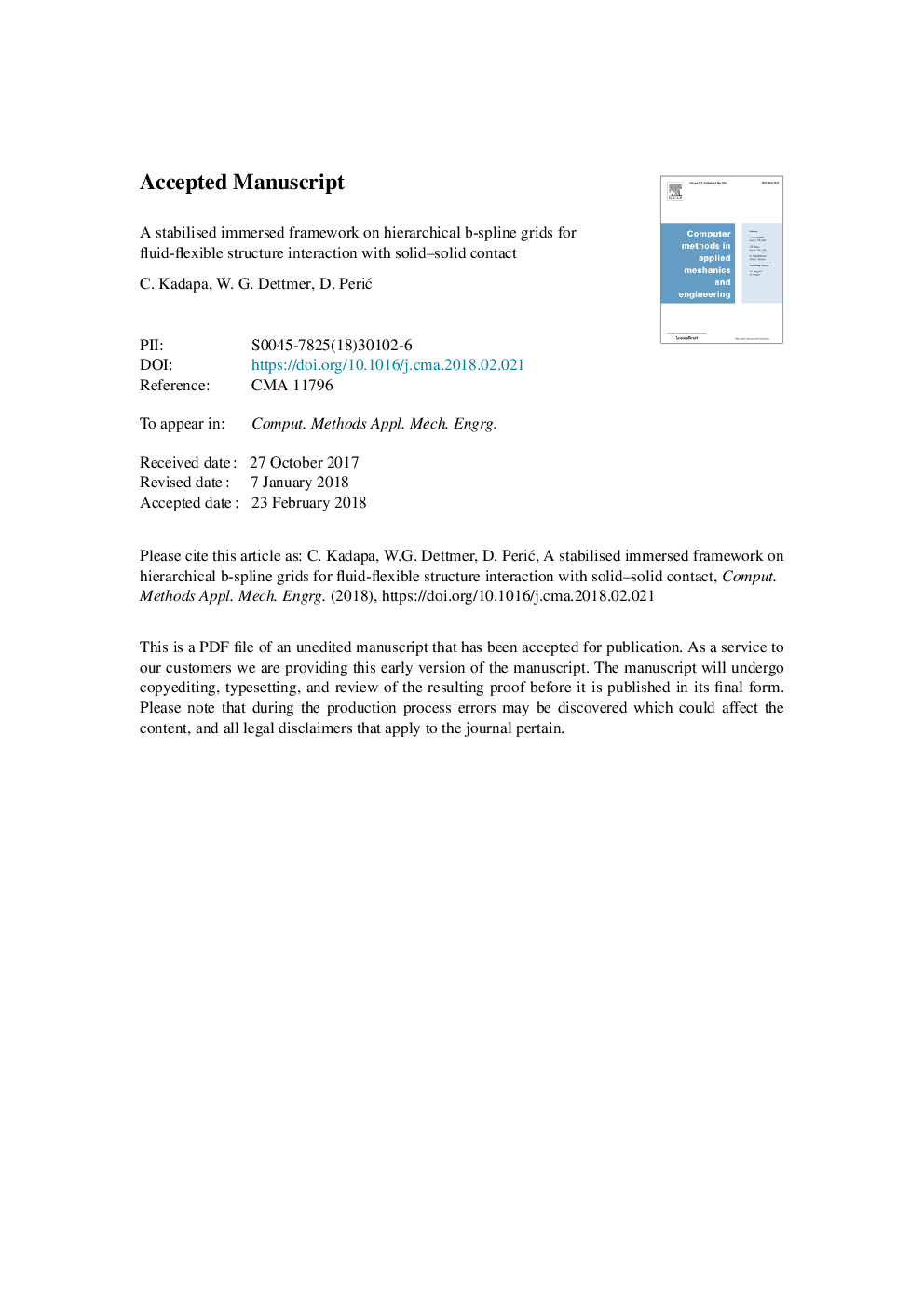| Article ID | Journal | Published Year | Pages | File Type |
|---|---|---|---|---|
| 6915513 | Computer Methods in Applied Mechanics and Engineering | 2018 | 27 Pages |
Abstract
We present a robust and efficient stabilised immersed framework for fluid-structure interaction involving incompressible fluid flow and flexible structures undergoing large deformations and also involving solid-solid contact. The efficiency of the formulation stems from the use of second-order accurate sequential staggered solution scheme for resolving fluid-solid coupling. Mixed Galerkin formulation, along with SUPG/PSPG stabilisation, is employed to obtain the numerical solutions of the incompressible Navier-Stokes equations. The immersed formulation is based on hierarchical b-spline grids, with unsymmetric Nitsche method employed to impose boundary as well as interface conditions on the fluid domain, while ghost-penalty operators are applied to alleviate the numerical instabilities arising due to small cut cells. The solid is modelled using linear continuum elements with finite strain formulation to facilitate the modelling of large structural deformations, and the contact between solids is modelled using the normal frictionless node-to-segment contact elements with Lagrange multipliers. In order to deal with the issue of uncovering for cut-cell based numerical schemes, a simple mapping technique is also introduced. Spatial and temporal convergence studies of the proposed scheme are performed by studying a simple example of flow over a deformable beam in cross flow. The robustness and accuracy of the proposed scheme are demonstrated by studying the benchmark examples of an oscillating beam in two-dimensions and flutter of a flexible simplified bridge deck in three-dimensions. In order to demonstrate the applicability of the proposed framework to complex fluid-structure interaction problems, the proposed methodology is used to simulate the fluid-structure interaction of a check valve with flexible valve plate.
Keywords
Related Topics
Physical Sciences and Engineering
Computer Science
Computer Science Applications
Authors
C. Kadapa, W.G. Dettmer, D. PeriÄ,
